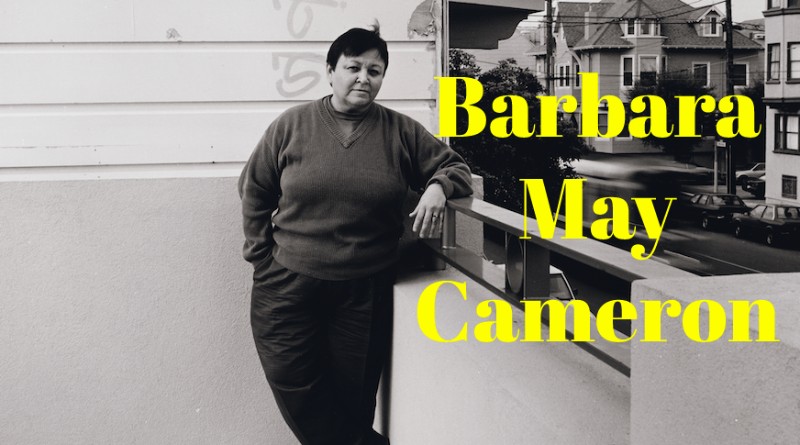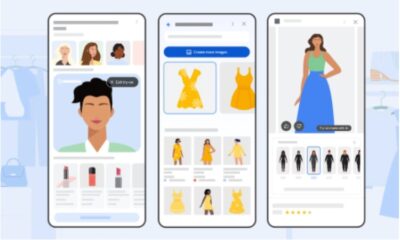Festivals & Events
Interesting Facts about Barbara May Cameron, a Native American Writer, and Human Rights Activist

Search engine giant Google represented a Google Doodle on May 22, 2023, to celebrate the 69th birthday of Barbara May Cameron, a Native American photographer, poet, writer, and human rights activist. Cameron was active in the areas of lesbian/gay rights, women’s rights, and Native American rights. Here are some interesting and fun facts about Barbara May Cameron.

Here is a look at the life and work of Barbara May Cameron.
Who was Barbara May Cameron?
Quick Look
Birth date: May 22, 1954
Died on: February 12, 2002 (aged 47)
Nationality: Standing Rock Sioux Tribe, American
Education: Institute of American Indian Arts, San Francisco Art Institute
Partner: Linda Boyd
25 Interesting Facts about Barbara May Cameron
- Barbara May Cameron (Hunkpapa Lakota) was born on May 22, 1954. She belonged to the Fort Yates band of the Standing Rock Sioux Tribe in Fort Yates, North Dakota, and was a Hunkpapa Lakota. She experienced childhood with the Standing Stone Indian Reservation, North Dakota, raised by her grandparents.
- Finishing her initial education and high schooling on the reservation, she proceeded to additional her schooling in photography and film at the Institute of American Indian Arts in Santa Fe, New Mexico.
- Barbara May Cameron moved to San Francisco in 1973 to attend the San Francisco Art Institute after spending two years in Santa Fe, New Mexico, where she attended the American Indian Art Institute. After graduating from high school, she majored in photography and film.
- Cameron received honors in the media and theater arts for his work as a filmmaker and photographer. Her screenplay “Long Time, No See”, stayed incomplete at her death.
- Barbara May Cameron and activist Randy Burns, an Alaska Native, co-founded Gay American Indians there in 1975, just a few years after the Stonewall riots in New York. GAI was the first gay Native American liberation organization (LGBTQIA+ group). As per Cameron, the needs and challenges faced by Native American gay people (LGBTQIA+ group) were distinct from those faced by the gay white community, which is why GAI was established. Additionally, there was a general lack of support for people of color in the LGBT community.
- Cameron contributed to the anthology Our Right to Love: a lesbian resource book in 1978.
- Barbara May Cameron organized the Lesbian Gay Freedom Day Parade and Celebration from 1980 to 1985, and in 1981 she contributed to This Bridge Called My Back: Writings by Radical Women of Color, which was edited by Cherríe Moraga and Gloria E. Anzaldúa.
- In Barbara May Cameron’s article titled “Gee, You Don’t Seem Like an Indian from the Reservation,” she looked at issues like homophobia and racism from both inside and outside the Native American community.
- She contributed to A Gathering of Spirit: A Collection of Writing and Art by North American Indian Women in 1983, which was a significant collection. Twelve Native lesbian works were included in the anthology, which was edited by Beth Brant.
- Barbara May Cameron was co-chair of Lesbian Agenda for Action and vice president of the Alice B. Toklas LGBT Democratic Club in the late 1980s.
- In 1986 Cameron, along with different women who called themselves Somos Hermanas (We are sisters), went to Nicaragua to study and show solidarity with ladies there, and to assist with working on their lives.
- Barbara May Cameron substituted for Jesse Jackson’s Rainbow Alliance to the Vote-based Public Show in 1988.
- She was appointed to the Citizens Committee on Community Development and the San Francisco Human Rights Commission in the same year by Dianne Feinstein, the mayor of San Francisco at the time.
- She was selected to be a member of the UN Commission on the Status of Women by Frank Jordan, the next mayor.
- Barbara May Cameron was the executive director of Community United Against Violence (CUAV) from 1989 to 1992, which assisted victims of hate crimes and domestic violence.
- She was the first recipient of the Bay Area Career Women Community Service Award the year after receiving the Harvey Milk Award for Community Service in 1992.
- Participated in the International Indigenous AIDS Network as part of the Berlin-based International Conference on AIDS in the same year. She traveled to various Indian reservations across the United States in 1993 to participate in AIDS education.
- HIV/AIDS excessively affected Native people in the mid-1990s, so Cameron moved forward to lead the charge. She worked as a consultant for the Centers for Disease Control and the U.S. Department of Health and Human Services, assisting with AIDS and childhood immunization programs, and she was involved in the San Francisco AIDS Foundation and the American Indian AIDS Institute.
- No Apologies: A Lakota Lesbian Perspective, Cameron’s essay, was published in the New Our Right to Love A Lesbian Resource Book in 1996.
- Barbara May Cameron worked as a consultant for the Centers for Disease Control and Prevention and the United States Department of Health and Human Services as well as the San Francisco AIDS Foundation and the American Indian AIDS Institute.
- Barbara May Cameron’s first project, which published the works of Native American women writers, was the Institute on Native American Health and Wellness, which she founded. The James Hormel LGBTQIA Center at the San Francisco Public Library holds Barbara Cameron’s papers.
- Cameron was in a relationship with Linda Boyd for 21 years, with whom she had a son named Rhys Boyd-Farrell. Robert Giard painted a portrait of Cameron intending to record key figures of the lesbian and gay community. This portrait is now part of the Beinecke Rare Book & Manuscript Library.
- Barbara May Cameron, 47, died on February 12, 2002, from natural causes. For her support of gay and lesbian Native Americans, Cameron was remembered.
- Many of Cameron’s passionate writing and speeches are housed at the San Francisco Public Library, where she is remembered. Her essay, No Apologies: A Lakota Lesbian Perspective, which appears in Our Right To Love: A Lesbian Resource Book, preserves her words.
- On May 22, 2023, Google featured a Doodle on its homepage for celebrating Barbara May Cameron’s 69th Birthday. Sienna Gonzales, a queer Mexican and Chitimachan artist, created the artwork for the Google Doodle.
-

 Business3 weeks ago
Business3 weeks agoPrakash and Kamal Hinduja: Driving Social and Environmental Change
-
Education4 weeks ago
Fred DuVal: University Leadership as a Critical Resource for Climate Change Research and Life-Saving Solutions
-

 Cryptocurrency3 weeks ago
Cryptocurrency3 weeks agoDesigned For The Masses: How Akasha (AK1111) Is Unlocking Crypto For The Next Billion Users
-

 Health3 weeks ago
Health3 weeks agoThe Hinduja Brothers Commitment to Global Health: Empowering Communities Across Borders
-

 Cryptocurrency4 weeks ago
Cryptocurrency4 weeks agoNexaglobal & Future World Token (FWT): Could This Be the Next Big Crypto Investment of 2025?
-

 Startup2 weeks ago
Startup2 weeks agoCost-Saving Strategies Every Small Business Owner Should Know to Boost Efficiency
-

 Startup3 weeks ago
Startup3 weeks agoMatthew Denegre on the Art of Deal Sourcing: Finding the Right Investment Opportunities
-

 Health2 weeks ago
Health2 weeks agoSt. John’s Community Health Examines Innovations in Pharmacy Access























